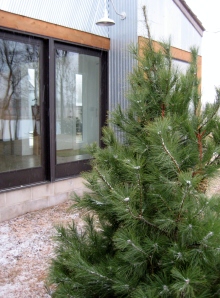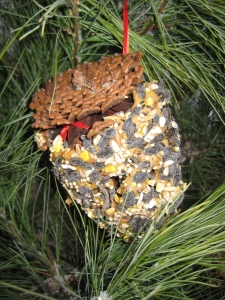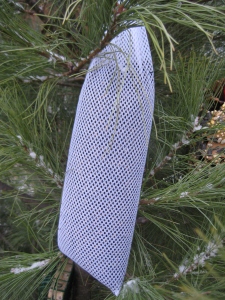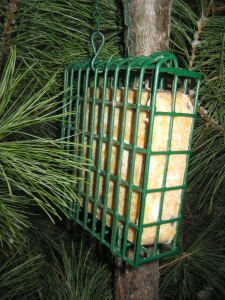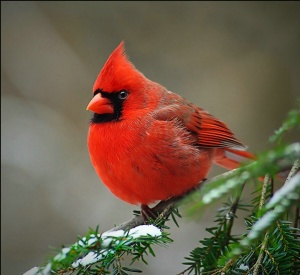“A bird doesn’t sing because it has an answer, it sings because it has a song.” ~ Maya Angelou
As the needles begin to fall from your Christmas tree, it’s time to consider recycling, or ‘up-cycling’ the tree. Consider turning your tree into a natural birdie banquet for the new year!
Remove your precious keepsake ornaments and replace them with bird friendly tasty ‘ornaments’. After you have un-decorated the tree, move it outdoors, and secure it to a sturdy location outdoors such as next to a flag pole or post using a bungee cord or twine. Locate the tree as you would locate any bird feeder. Birds prefer a spot about 10 feet from cover, either evergreens or shrubs. This distance prevents predators such as cats from stalking the birds as they eat. It also gives the birds a place to rest.
If you have trouble with birds colliding with your windows, locate your tree (and other feeders) closer to the windows, as this tree is, so the birds are travelling at a slower speed when they collide which will reduce the number of casualties.
Decorate the tree with any bird feeder you choose. We’ve made our own feeders using pine cones, spread with peanut butter, then rolled in birdseed.
Tie a ribbon around the cone to create a hanger for hanging on the tree.
We’ve also hung an inexpensive nylon thistle feeder (available at your local garden center) filled with thistle, a favorite for finches.
We have also added a suet feeder for our wintering woodpeckers to enjoy. Bon appetite!
